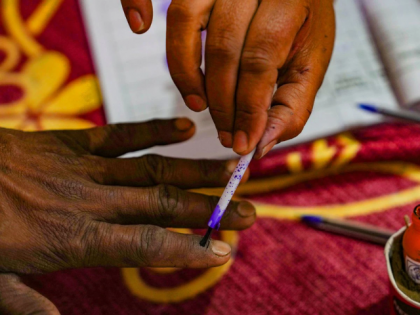Maharashtra Civic Body Polls 2025: State Issues Orders for Ward Formation Across State, Mumbai to Have 227 Single-Member Wards
By Lokmat English Desk | Updated: June 11, 2025 13:59 IST2025-06-11T13:56:00+5:302025-06-11T13:59:41+5:30
The Maharashtra state government has officially initiated the process for conducting local body elections across the state. On Tuesday, ...

Maharashtra Civic Body Polls 2025: State Issues Orders for Ward Formation Across State, Mumbai to Have 227 Single-Member Wards
The Maharashtra state government has officially initiated the process for conducting local body elections across the state. On Tuesday, the government issued directives for ward delimitation in all municipal corporations, municipal councils, and nagar panchayats, including Mumbai. In the case of Mumbai, the Municipal Commissioner has been entrusted with the responsibility of executing the ward delimitation. A total of 227 wards will be created in Mumbai, with each ward representing a single member. The demarcation will be carried out based on the latest population figures available from the census data.
Municipal Commissioners and District Collectors Assigned Roles
To streamline the process, the government has classified municipal corporations into different categories based on size and administrative setup. Municipal Commissioners will handle the delimitation in Class A cities like Pune and Nagpur, as well as in Class B cities such as Thane, Nashik, and Pimpri-Chinchwad. Similarly, Class C cities, including Navi Mumbai, Vasai-Virar, Chhatrapati Sambhajinagar, and Kalyan-Dombivli, will also fall under the jurisdiction of Municipal Commissioners. For Class D cities like Mira-Bhayandar, Ulhasnagar, Bhiwandi-Nizampur, and Panvel, the responsibility lies with the respective District Collectors.
Also Read: Mumbai Metro Line 3 Update: CM Launches Common Mobility Card – Here's How to Use It
Ward Formation to Follow Census and Geographic Guidelines
The delimitation process will be strictly based on population data from the census. To determine the average population per ward, the formula to be used is: total population divided by total number of members, then multiplied by the number of members per ward. Natural boundaries such as rivers, roads, and railway lines will be considered to avoid splitting localities. It has also been clearly stated that no single building or complex will be divided between two wards. This approach is meant to ensure both administrative convenience and fairness in representation.
Rules for Municipal Councils and Nagar Panchayats
In the case of municipal councils and nagar panchayats, the task of ward delimitation will be handled by the respective Chief Officers. All wards in municipal councils will generally consist of two members. However, if an even distribution isn't possible, one ward may have three members. For nagar panchayats, the total number of wards will be fixed at 17, with one member representing each ward. These new directives aim to bring uniformity and transparency to the ward formation process and facilitate smoother local body elections across Maharashtra.